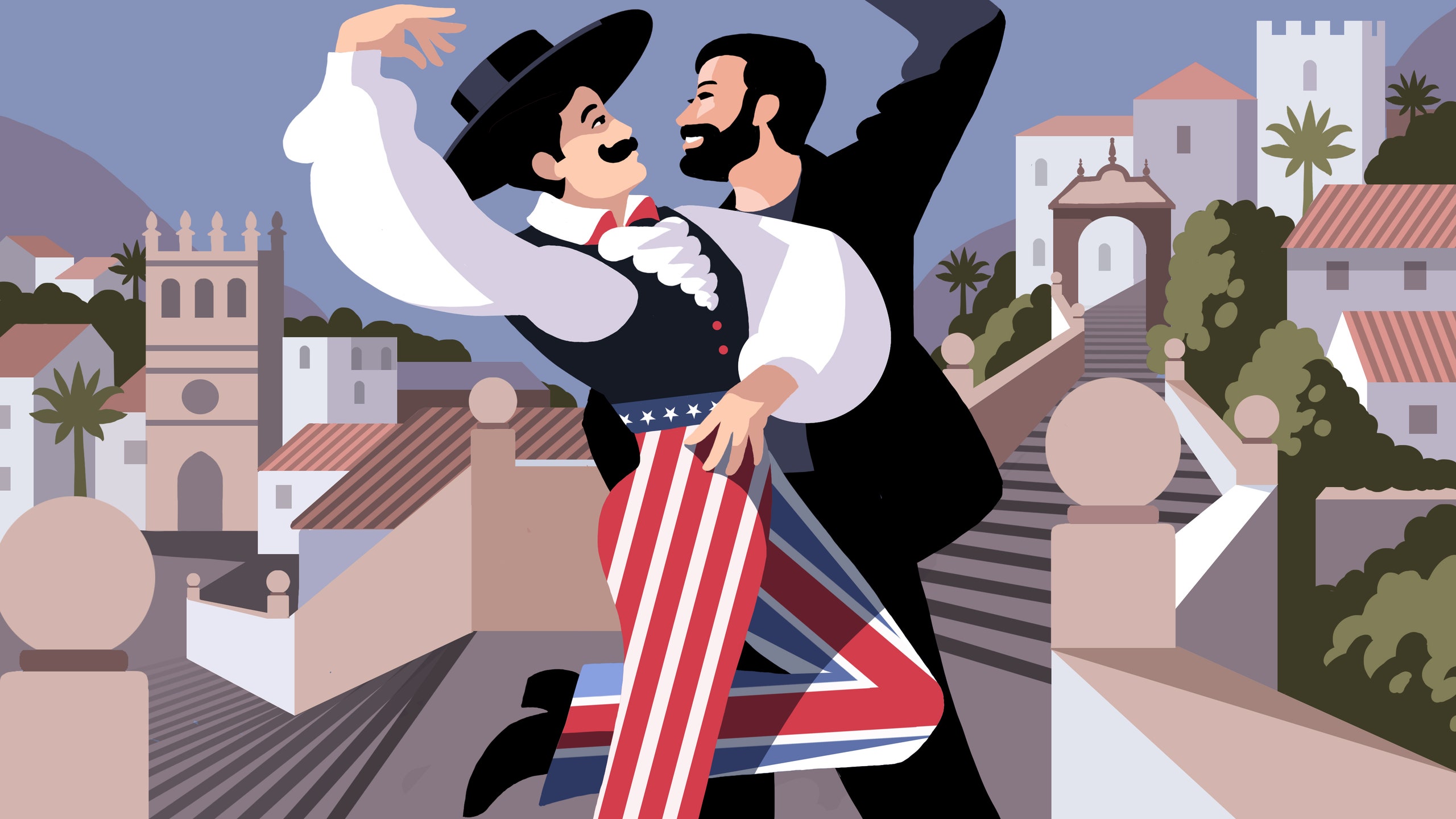The Intersection of Language and Queerness
This Pride month, we celebrate travel’s capacity for discovery, renewal, and love through a lens of queerness. It’s a powerful journey that opens us to seeing the world—and ourselves—in a new light.
Food is not the only way the tongue can travel. I learned this from Freddy, a personal trainer in Bogotá. Cozying up between casual encounters and dating, I’d lounge on his couch as he would sneak kisses over my shoulder, effortlessly rolling into a cuddly embrace. Each day together felt like a romantic movie montage.
However, the vulnerability of bilingual intimacy brings a unique depth. During one particularly private moment, Freddy whispered in my ear, “Te gusta?” I responded with a soft “Si, me gusta mucho.” This simple exchange shattered the mundane phrases from my basic Spanish vocabulary, unlocking a profound emotional connection I had not anticipated.
This was much more than mere words; it shattered the ordinary and revealed a queerness within me that was truly liberating. In Spanish, I discovered a new dimension of my identity, allowing me to express aspects of myself that felt vibrant and joyful.
Furthermore, bilingualism fosters a remarkable freedom in expression, offering infinite ways to convey thoughts and feelings. In fact, a 2006 study found that bilingual individuals often display greater agreeableness, conscientiousness, and extroversion, even when communicating in their native language. This fluency fosters a confidence that resonates deeply.
Learning another language immerses you in an alternative way of being. It is about more than vocabulary; it’s about fully embracing who you are. Whether you’re in leather or drag, or navigating personal challenges, queerness and language intersect beautifully to enrich our lives.
Admittedly, in English, I can sometimes be verbose, peppering my speech with fillers. However, when I switch to Spanish, I find clarity and directness. Instead of meandering phrases, I embrace potent statements. For instance, instead of saying, “I was thinking—maybe we could grab dinner,” I state confidently, “Let’s have dinner.” The shift from Richard to Ricardo allows for a richer interaction.
When engaging with someone in Bilbao, I complimented a man on his English in Spanish. He turned out to be a player for Manchester United. Rather than feeling embarrassed, my inner Ricardo effortlessly diverted the conversation to a humorous topic, transforming what could have been an awkward moment into a delightful exchange.
This reciprocal magic of bilingual interaction extends to Spanish speakers as well. For instance, while in Havana, my companion told me he wanted “life” as his drink, illustrating how language can bond us beyond just words. We reflect on deeper meanings of experiences together, recognizing the fluidity of our connections.
During a visit to Machu Picchu, I met Mateo. Our karaoke bar experience led to a profound connection, as he shared that conversing with me felt like “reading a book.” His sudden switch to English demonstrated how navigating languages can reveal layers of ourselves and our desires.
In this space of shared language and intimacy, we transcended mere words, with kisses illustrating truths that resonate across languages. Spanish taught me that a kiss can be the farthest distance traveled in just a breath, deepening the bond between us.
Consequently, our bilingualism constructed a bridge between our souls, enhancing our confidence and intimacy. However, there was a light-hearted moment when our smiles interrupted the kiss—showing that sometimes, joy can lead to joy’s own delightful interruptions. Cuidado.




